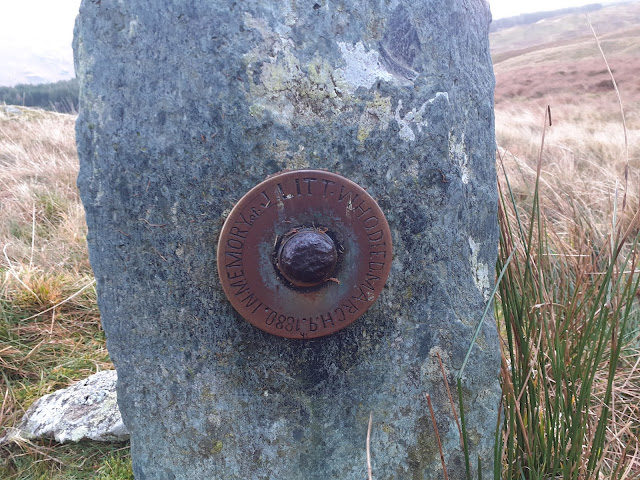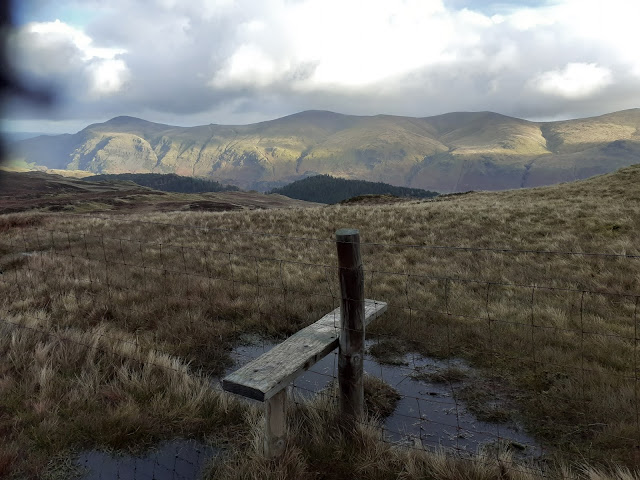John Litt was born in Keswick around 1832, the son of Thomas and Mary, nee Porter. His parents were both born around 1806 and were married on 28th June 1829, in the parish of Crosthwaite; Thomas is known to have been a tailor. John appears to be the first child, born in 1831. He was followed by Thomas jnr. (1834), Joseph (1836), William (1838), and Henry who was born and died in 1841, prior to the 6th June first national census of that year. William died in the second quarter of 1842 and a Ann was born in the third quarter of that year. Jane was born in the last quarter of 1845, then a second William was born in the last quarter of 1848.
Little is known of John in his early life but in1851 he was known to be a boot cleaner at the Royal Hotel, Keswick, and unmarried. Ten years later he had improved his position to that of Groom and on 16th October 1862 he married a Sarah Davidson, of Underskiddaw, in Crosthwaite Church and was then a bus-driver at the Prince of Wales Hotel, Grasmere.
On Saturday 20th July 1867 John was before Keswick Magistrates following being reported by PC Roche* for furious driving the Royal Oak Omnibus around the corner of the hotel itself, so he must have moved employers but in the same role of driver. When the officer remonstrated with him for nearly knocking over an old woman if the horses had not been stopped, he used foul language towards the constable. The magistrates fined him £1 with 9s 6d costs, or 14 days imprisonment in default.
John and Sarah were to have three children, John (1863), Mary Hannah (1866) who sadly died 18th October 1868, and William (1868).
John was a keen follower of the hunt and on the morning of Tuesday 9th March 1980, with a friend called John Vickers he attended the Blencathra hunt when it went into the area of The Bog, near mere's Gill, between Raven Crag and Threefooted Brandeth, near High Seat, Keswick. This is the fell group between the Thirlmere Valley and Borrowdale. He has appeared fatigued but did not complain, and the hunt moved on to the Borrowdale area. After the completion of the hunt his family became increasingly concerned that John had not returned that evening or night, so on Wednesday morning they alerted the hunt followers. Mr. David Powley immediately went to Mr. Oliver, who was the shepherd of Castlerigg and believed to be the last person who had seen John. The only hope they had was raised by the knowledge that Mr. Vickers had also not returned and could the two still be together somewhere on a task or jaunt? While others searched different parts of the fells the two men, with a dog, immediately went to the area where Mr. Oliver had last seen John, which was in the Mere's Gill area. Unfortunately his body was found by the two men only about 15 yards from where Mr. Oliver left him; he was lying on his back, with his head pointing down the valley; his body was quite cold and stiff. The other searchers were contacted and attended the area. At a little after 12noon the searchers constructed a bier out of their mountain sticks and carried John's body to the nearest place a horse and cart could be accessed. It was taken home to his grief stricken family at 3pm.
Doctor O'Reilly had treated John and had no hesitation declaring that he had suffered from disease of the heart. The coroner was informed but deemed it unnecessary to hold an inquest. John was laid to rest in Crosthwaite Church graveyard.
At some stage it was decided to commemorate John by the erection of two stones at the place where he died at mere's Gill.
I decided to visit the memorial and add to the Litt history as much as I could, to give as comprehensive account as was possible and place an easy to locate map reference for others.
 |
| Standing next to the John Litt Memorial. |
 |
| The two stones together, looking to Raven Crag. |
 |
| The second stone with an uncipherable inscription. |
 |
| The John Litt Memorial Map Ref: NY296186 |
Sarah went on to earn a living as a laundress. Sadly tragedy was again to follow as their son John died on 4th May 1884, aged only 20 years. William, the only surviving child of John and Sarah, died on 5th May 1915; Sarah was to live until the age of 77 years, dying on 15th March 1917. All the family are commemorated on the same headstone in Crosthwaite Churchyard.
Although the the death of John Litt was the more well known incident, with the erecting of the memorial and modern walkers visiting it due to its reference in walking books, it was not the most tragic occurrence within the Litt family.
John's brother William went on to become a joiner in the town at Gatey Court. He was married to Mary and they had at least six children. On Tuesday 30th July 1895 the newly elected MP for the Mid-Cumberland area, Mr. James William Lowther, arrived with his wife and children at Keswick Railway station, to reside over the summer. A reception had been organised by local dignitaries and the whole town turned out to greet him; it had been done against James Lowther's wishes. A carriage was brought to the station and the horses were unhitched, with local men then pulling the conveyance along to the Royal Hotel, halting temporarily on the south side of the upper market square. It then proceeded down the street past the town hall and was passing opposite Greenhow's Dining rooms, which was on the north side of the Market Place. Large crowds had also gathered there to offer their congratulations, and the intention was for the carriage to be pulled to Derwent Hill, where the Lowther's were to take residence for the summer. William was at the dining rooms talking to a local builder called William Cowperthwaite; he then crossed the road to assist in pulling the carriage, which was travelling at a moderate speed of around four miles per hour. In making a grab for the rope he missed it, overbalanced, and fell, causing three other men to fall over him, two of whom were a waller called Joseph Pearson, and a carter by the name of Robert Wren. The two carriage wheels passed over William's head, crushing it and almost immediately killing him, such was the horrific nature of the injuries caused. Mr. Pearson was also injured, but was able to make his own way home. Gatey Court was nearby and William was taken to his residence and grief stricken family. Two doctors had been nearby and at the house one thought he detected a pulse, so reanimation was attempted, but with no success. Mr. and Mrs. Lowther had been shocked and visited the widow on the Wednesday morning to express their deep sympathies, leaving a substantial sum of money to defray any immediate expenses.




No comments:
Post a Comment